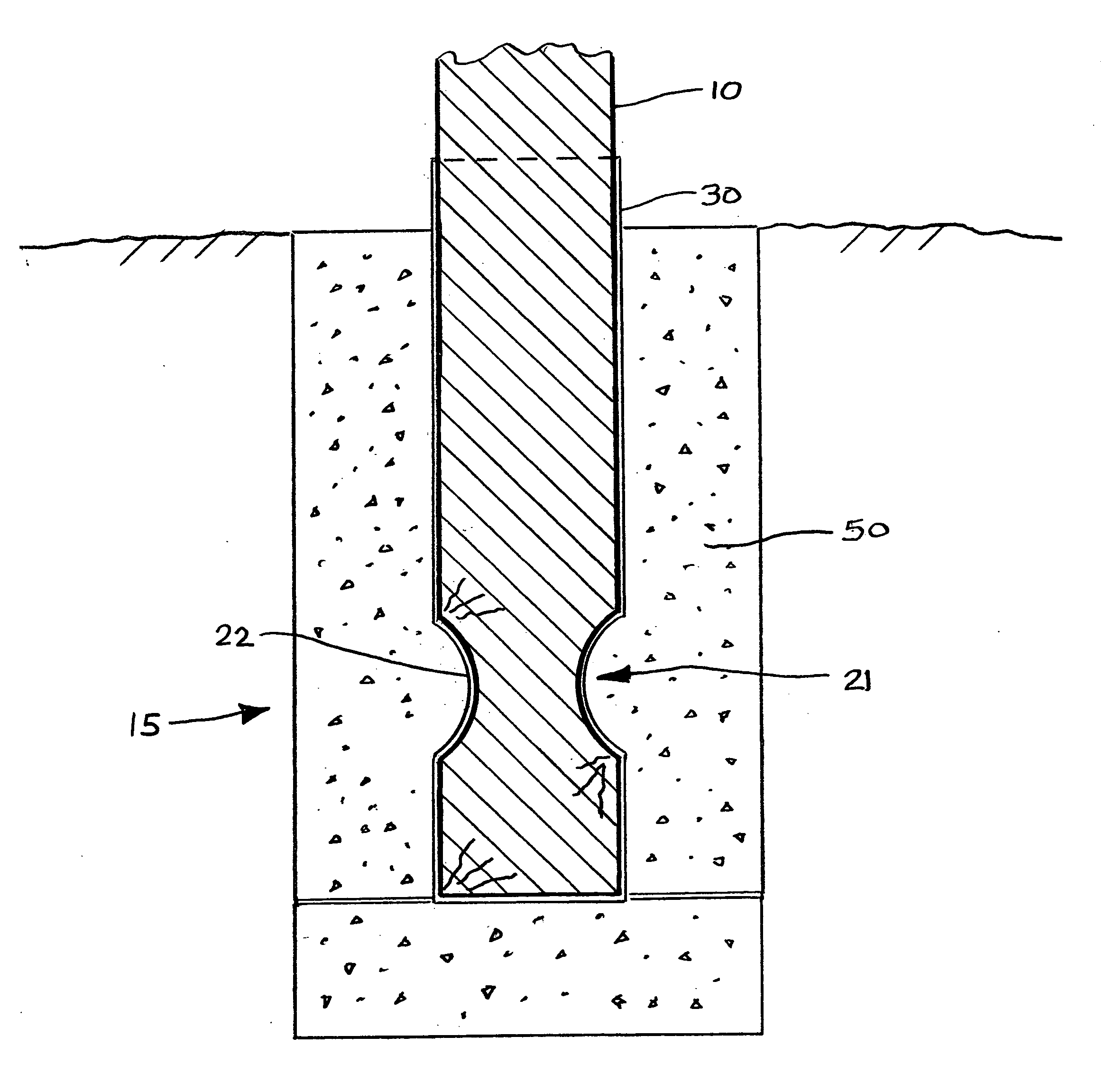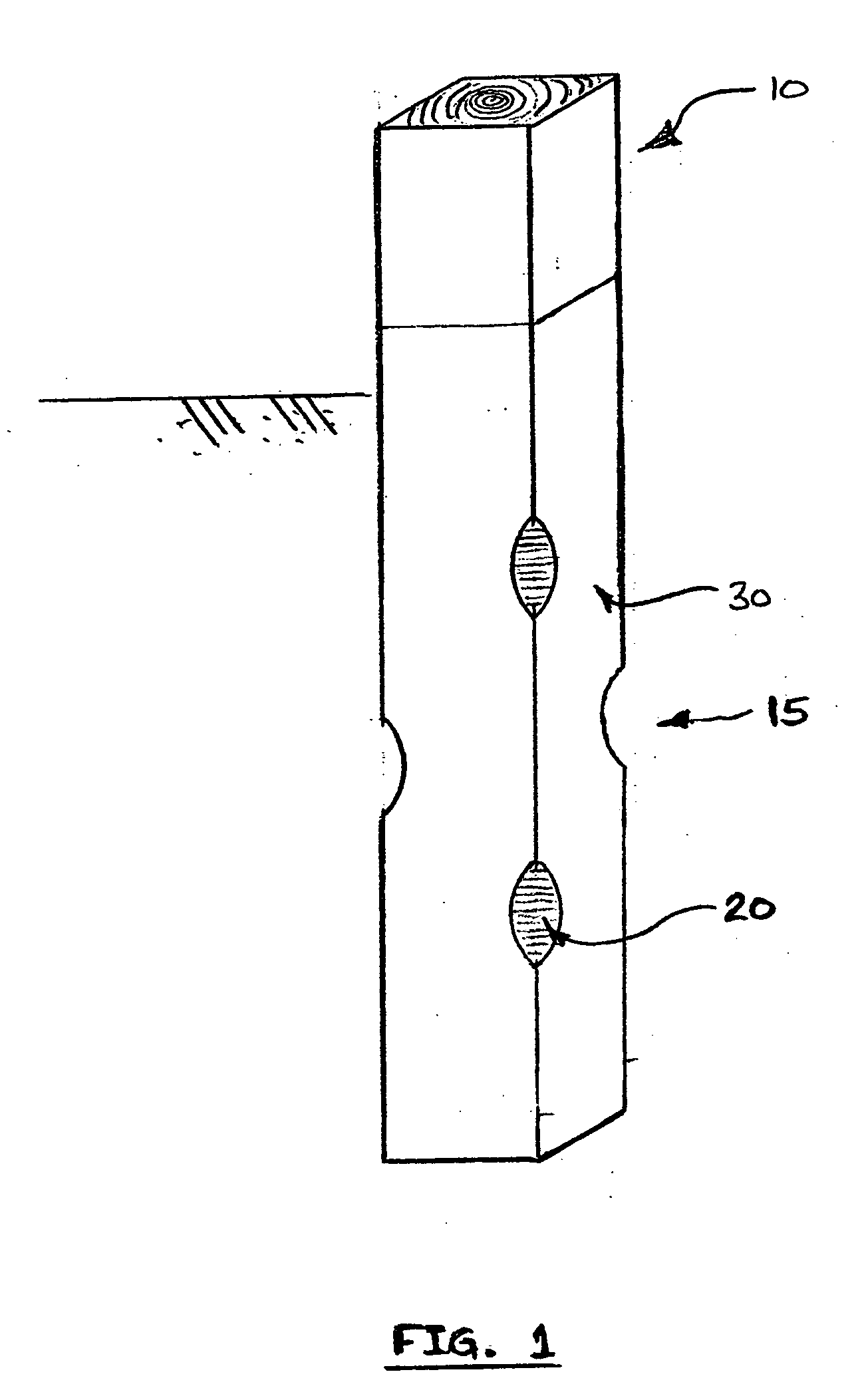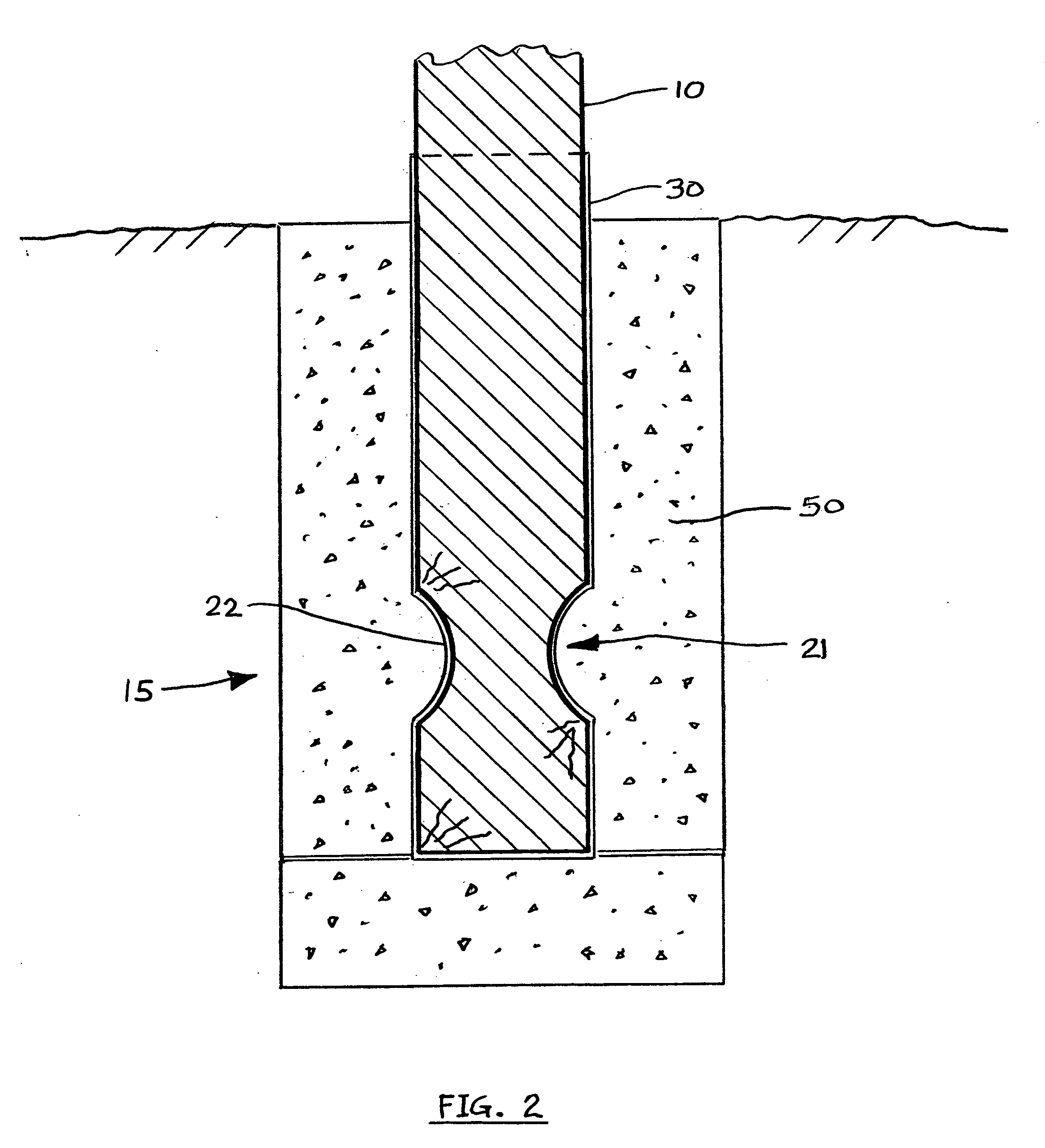Post retention anchor
a technology of vertical wooden posts and anchors, which is applied in the direction of buildings, buildings, constructions, etc., can solve the problems of unperforated, protective barriers that conform to the exterior contours of posts, etc., and achieve the effect of preventing wood deterioration and being easy to press or stamp
- Summary
- Abstract
- Description
- Claims
- Application Information
AI Technical Summary
Benefits of technology
Problems solved by technology
Method used
Image
Examples
Embodiment Construction
[0019] When referring to the Figures, like parts are numbered the same in all of the Figures.
[0020]FIG. 1 is a perspective partial view of one embodiment of the post retention anchor 15 on a rectangular post. Post 10 is a conventional wooden post used in post-frame building construction. The portion of post 10 shown is that which is typically embedded into the ground to form a building foundation. Also shown in FIG. 1 is indentation 20 and conforming protective cover 30. In the preferred embodiment, the conforming protective cover 30 is as described in U.S. Pat. No. 6,033,519, but the post retention anchor 15 may also be used with other protective coverings that conform to the shape of the post and indentations.
[0021] Wooden posts used in post-frame construction typically are sawn, solid 4×6, having finished dimensions of 3½ inches by 5½ inches. Other commonly used sizes are 6×6, having finished dimensions of 5½ inches square; 4×4, having finished dimensions of 3½ inches square; a...
PUM
 Login to view more
Login to view more Abstract
Description
Claims
Application Information
 Login to view more
Login to view more - R&D Engineer
- R&D Manager
- IP Professional
- Industry Leading Data Capabilities
- Powerful AI technology
- Patent DNA Extraction
Browse by: Latest US Patents, China's latest patents, Technical Efficacy Thesaurus, Application Domain, Technology Topic.
© 2024 PatSnap. All rights reserved.Legal|Privacy policy|Modern Slavery Act Transparency Statement|Sitemap



